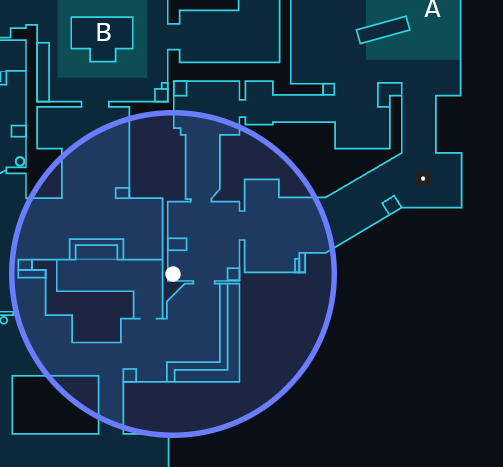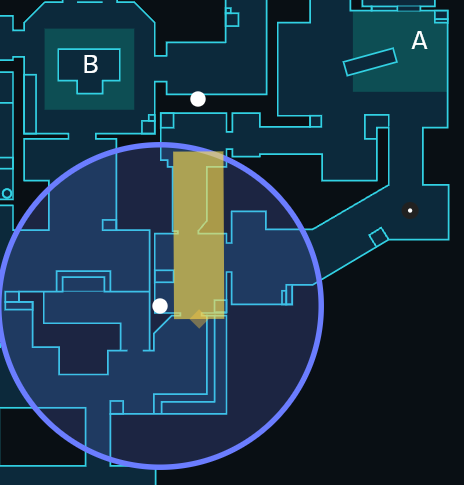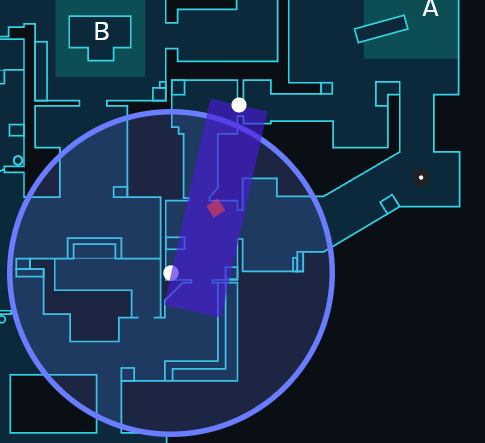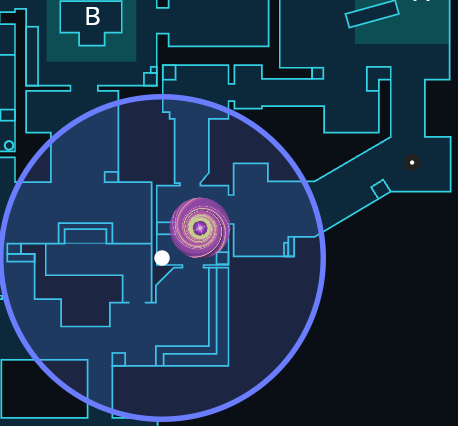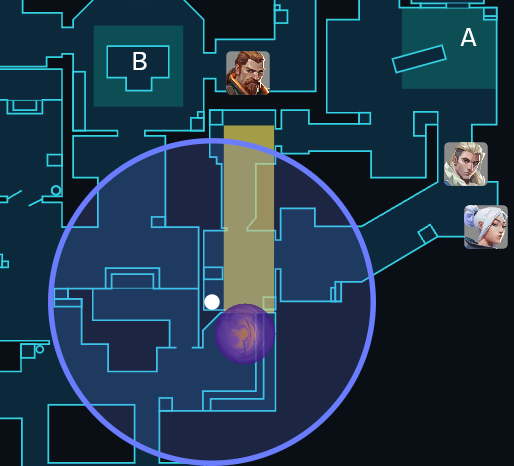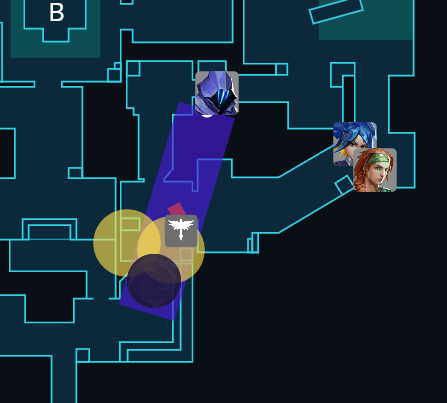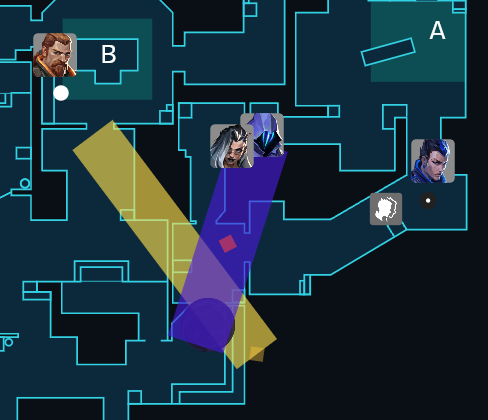Contesting Control
Denying early attacker positioning.
Today’s post is a follow-up to “Fighting for Control on Attack”. Some time later this week I plan on publishing a piece on anchoring to be followed by a piece on rotating (the role). If there are any other topics you’d like to see discussion of feel free to leave a comment. Thanks, as always, for lending me your eyeballs.
How can we apply the same framework from my last post to A long control on defense? First, lets broaden our view a bit and look at the adjacent areas to long. Attacking teams interested in taking A site almost always need either long or sewers control to enable their site hit. A lobby, importantly, feeds into both long and sewers. Defenders who manage to take control of lobby before the attackers can take either lane can therefore maintain control of both long and sewers with less investment (and earlier information to inform rotations) than would be required to control both lanes without lobby control.
Given that lobby control all but ensures control of A site, our goal should be to transition long control into lobby control if possible. Just as we did last time, let’s make a Sova dart the axis of our utility set.
This isn’t my favorite arrow, but it’s easy to throw and difficult for attackers to destroy from anywhere other than lobby. Now that we have a place to start, what utility can we add to further discourage attackers from taking early long control?
This fault line will prevent any agent without movement from taking long or sewers control immediately and increase the effectiveness of our Sova dart.
This can also be accomplished by a paranoia.
Or a gravity well. Since I’m partial to Breach on Haven, let’s use the fault line. Suppose our dart and fault line are enough to deny early lobby presence, how can we discourage attackers from a delayed lobby take and allow us to safely take more aggressive positioning?
Adding a smoke to the lobby exit will threaten presence in lobby, long, and sewers, and necessitate attacker investment to clear one additional piece of the map before moving into a standard A hit. Wouldn’t you prefer to drone sewers than lobby as an attacker?
If we slot a Jett into the corner we now have a very strong way of denying early attacker positioning on A with only two bodies (Breach can rotate quickly wherever he’s needed). Suppose we wanted to replace Jett with Neon, Sova with Skye, and Astra with Omen. The early contest might look something like this.
Let’s take a look at a round from the NRG Ghost match last weekend and see how some of the ideas discussed above play out at the professional level.
NRG’s setup employs both a fault line and paranoia coupled with the same lobby smoke we discussed earlier, while Yoru’s clone takes the place of the flash/dart.
One weakness of this setup (and similar setups) is the ability of certain agents to disrupt timings. Neon, Jett, Omen, Raze, and Yoru are all capable of taking aggressive space where other agents would be stymied by NRG’s utility. Here Nismo’s blast pack gives him the ability to take cubby early despite all of NRG’s pressure and the subsequent control Ghost takes on A long translates into a round win.


